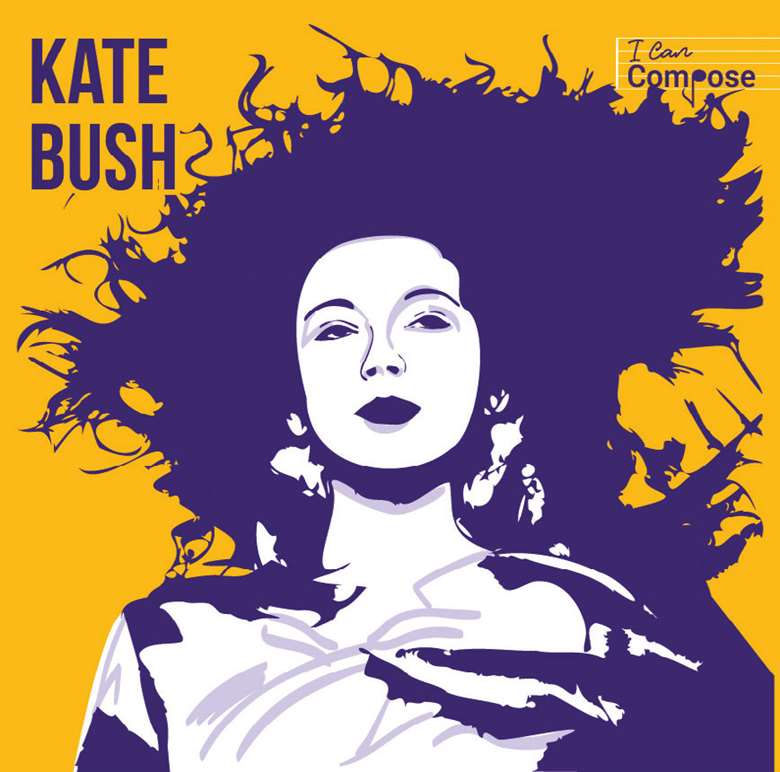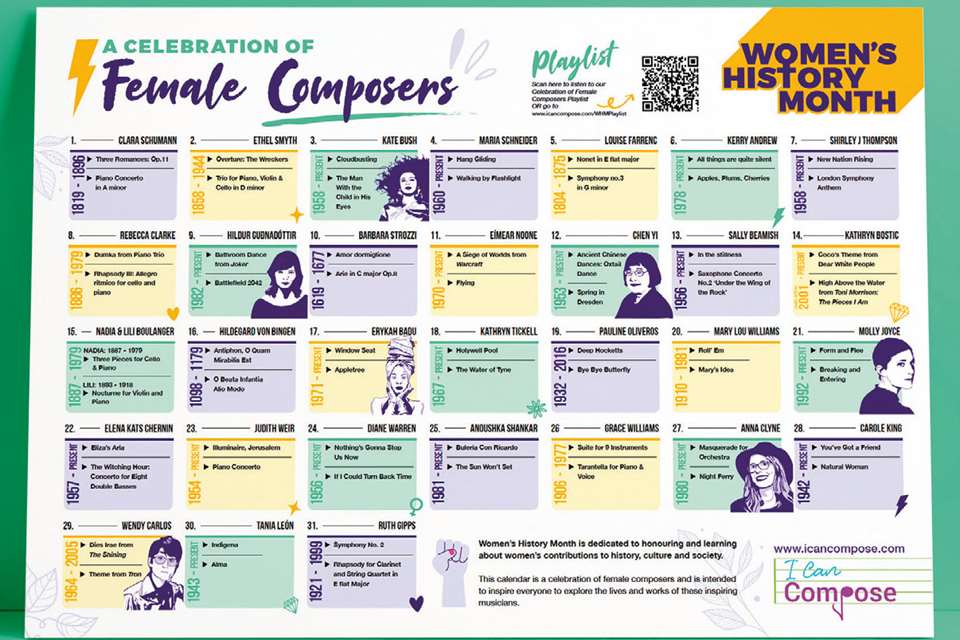Filling the silence: Gender representation at GCSE and A Level Music
Emily Gunton
Friday, April 1, 2022
There is still a worrying gap on A Level and GCSE Music syllabuses. Emily Gunton investigates practical ways in which teachers can promote equal gender representation in the music classroom.

Toby Potter
One of the greatest frustrations of being a music teacher is that I feel as if I spend day after day, week after week teaching my students about music composed by men. There is no doubt that Western classical music is centred around the compositions of male composers, but as a teacher, what can we do to promote women in the music industry?
The problem
Firstly, we need to call it out when women are not represented. In 2015, a student launched an online campaign to ensure that women were represented on the new Edexcel A Level Music syllabus, which was initially launched with 63 male composers and no female ones. After a very public backlash and extensive media coverage, this was rectified, but not to the point where there was equal representation.
The AQA A Level syllabus sees students study ‘named artists’ Mariza, Anoushka Shankar, Joni Mitchell and Beyoncé. As they are optional units, students could conceivably spend two years without studying anything composed by a woman.
At GCSE, there is no real improvement. Judith Weir and Anna Meredith appear on the AQA specification, and Sinead O’Connor makes an appearance on the Edexcel specification, but that is not nearly enough. This leaves it to us, as teachers, to fill in the gaps. This can often be easier to do in Key Stages 1, 2 and 3 but becomes more challenging at GCSE and A Level due to the limitations in the areas of study. We essentially have complete specifications full of men.
The instrumental grade system also needs to be addressed. A quick look at the ABRSM Grade 8 Piano syllabus shows that only 13 per cent of the pieces listed are composed by women. Although the Grade 1 syllabus is more balanced, it is a good indicator of inconsistent representation.
A lack of representation
Last year saw the release of the Model Music Curriculum (MMC), which many saw as a lost opportunity. This could have been a perfect forum to challenge representation and strive for better gender equality and diversity in the music curriculum. The former minister of state at the Department for Education, Nick Gibbs, introduced the MMC by saying: ‘The Model Music Curriculum is designed to introduce the next generation to a broad repertoire of music from the Western classical tradition, and the best popular music and music from around the world.’ The irony is that the broad repertoire he refers to is not broad enough, with only a handful of women named throughout the 104-page document.
The Arts Council released its Creating a More Inclusive Classical Music sector report at the end of 2021. The study focused upon the musicians and learners within the Western classical symphony orchestra tradition. The report is an excellent barometer of the current state of play in the profession and demonstrates the need for better representation of women, stating: ‘Female instrumentalists are in the majority among younger learners. […] Though women make up a substantial portion of the workforce, they are less well represented in senior roles like orchestral principals, as solo artists, in artistic leadership roles and elsewhere; they also appear to be overrepresented among the educational workforce but less well represented in other activities like recording and theatre work.’
The report shows that the leap from school musician to music student or professional needs addressing. Fortunately, as teachers, we can signpost our students towards organisations such as Sound and Music, which continues to work towards their pledge of 50:50 gender parity. We can also point students towards promising opportunities – such as the Royal Philharmonic Society's Women Conductors programme that is open to female music students aged 16 and above – or success stories, such as the recently launched initiative ‘Gender and the Large and Shiny Instruments’ that highlights role models for female and non-binary musicians.
Resources and initiatives
Larger organisations have launched successful initiatives to tackle the issue – for example, the PRS for Music Foundation and the Women Make Music project which invites musical bodies across the UK to propose the commission of new work by a female composer, with the financial support of £5,000 available for a new composition of any musical genre. It is essential to show our female students that help and support are available to them in the professional world. However, that does not necessarily help when you teach Year 7 at 3pm on a Friday in November. See the boxout for a few suggestions of resources I have used to diversify my curriculum to include a greater representation of women.
Leading by example
Where possible, we need to showcase role models, and I have found these ideas have worked well with my students:
-
Keep an eye on concerts, podcasts, and International Women's Day articles.
-
Ask peripatetic female teachers to speak to your classes about their careers.
-
Join Women in Music. The organisation runs regular online events and initiatives such as its collaboration space on Spotify.
The Learning, Playing and Teaching in the UK in 2021 report released by the ABRSM concludes that ‘digital technologies open up new opportunities for teachers and learners to work with other music makers, regionally, nationally, globally. Teachers will bring individual students together to share ideas, perform to one another, and be part of inspiring presentations.’ As an educator, I have already collaborated online with another school on two Women in Music seminars. It has allowed my students to engage with women in the music profession and reaffirmed my belief that if you see it, you can be it.
Resources
-
I Can Compose has a free Women's History Month Listening Calendar displayed as a poster. The poster features 32 female composers and is intended to inspire everyone to explore the lives and works of these trailblazing musicians.
-
Use the Sound and Music website to explore the latest new sounds and music created by its composers. There is information on the Sound and Music's summer school and resources as part of its ‘Minute of Listening’ and CPD for teachers.
-
Classic FM has a helpful page with YouTube links to 10 women who changed the classical music world forever.
-
BBC Radio 3 has a page dedicated to celebrating women composers, and more recently, Errollyn Wallen was Composer of the Week on BBC Sounds.
-
BBC Ten Pieces has lesson plans, MP3s and choral works by Dr Kerry Andrew.




